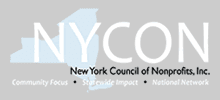NY Gov. Cuomo Submits Budget With $1.3 Billion Deficit
By Kristen Meriwether
NEW YORK—During his third budget address as governor of New York state, Andrew Cuomo, showed just how important a decimal place is. The first slide in his presentation popped up showing a $13 billion budget deficit.
“I just wanted to make sure you guys were paying attention,” Cuomo quipped, to laughter from the crowd gathered at Hart Theatre, Center for the Performing Arts, Albany.
It made the $1.3 billion deficit seem not so bad.
After successfully passing two on-time and balanced budgets during his first two terms in office, Gov. Cuomo, submitted this year’s budget with promises for a historic third year in a row, something not done since 1977 in New York state.
“I wouldn’t say it is a Swiss watch, but it is working better than ever before,” Cuomo said.
Following his passionate State of the State speech two weeks ago, Cuomo aimed to answer the question on everyone’s mind when he rattled off new initiatives and ideas—how are we going to pay for that? While the governor showcased new spending, and cuts, all the while not raising taxes, he let municipalities know the days of reaching for a handout in Albany are over.
“There is no piggy bank in Albany anymore,” Cuomo said.
To alleviate the stress from struggling municipalities, Cuomo proposed a financial task force that would—much like a private company going through bankruptcy—restructure debt and fix the problem.
Much like the federal government, New York State is hoping to kick-start the shaky economy with economic development. Without a surplus of money, the state will have to be smart in how it does it.
“The state is no longer in a position to do this on its own so he is talking about a lot of partnerships,” said Bruce Berg, professor of political science at Fordham University. “The state will be the catalyst, the engine, but it will be the private sector that does much of the growth.”
Unlike in years past where large ambitious programs were announced, the allocations were modest, with things like grants, pilot programs, and tax credits.
To drive tech education, a growing sector in New York state, the governor put up $50 million in a venture capital fund in hopes of bringing tech leaders to partner up to fill vacant high-tech jobs. Money was allocated for partnerships with SUNY and CUNY to update higher education as well. Tax credits for the film industry were extended another five years.
Minimum Wage
Just like in his State of the State address, the governor mentioned raising the minimum wage by $1.50, saying it would increase total wages by an estimated $1.01 billion per year.
The measure drew cheers from the crowd, however, its placement in the budget address drew questions from the Citizen’s Budget Commission. “It is not a budget item. It does not have any effect on the state budget,” Carol Kellermann, president of Citizens Budget Commission. “It is a requirement for private sector employers.”
Kellermann was unsure where the $1.01 billion figure came from and did not believe the figure had any sort of budget impact, such as added revenue figured into the budget, especially since no measure had passed.
Sandy
The governor acknowledged the daunting task of recovering from Hurricane Sandy, one of the worst natural disasters the state has seen. A total of $21 billion in recovery, rebuilding, and mitigation was put in the budget. Cuomo expects $30 billion from the Hurricane Sandy Tax Relief Act, which has passed the United States House of Representative but not the United States Senate.
Cuomo said when the bill is passed he wants to give communities the opportunity to have input as to how that money is spent. “We can’t sit here in Albany and tell the Rockaways exactly what they need to do,” he said.
Ron Deutsch, executive director of New Yorkers for Fiscal Fairness applauded the measure, but felt the governor could take it a step further.
“We want them to not only have a say in the rebuilding process, but we should also make sure the people in those communities get first shot at those jobs as well,” Deutsch said.
New Normal
For a state not known for passing on-time and balanced budgets, if the state Legislature can do it for a third straight year, the positive message it will send, will reach well beyond the New York state borders.
“It has a psychological value. It tells the credit markets this is not a short term blip in the way New York State does its budgeting. It shows this is really going to be the new normal,” Kellermann said. “I think it sends a good message to the investor community and I think it sends a good message to tax payers that their elected officials are trying to make sure their money is spent effectively and in a responsible way.”
For the online article click here.













